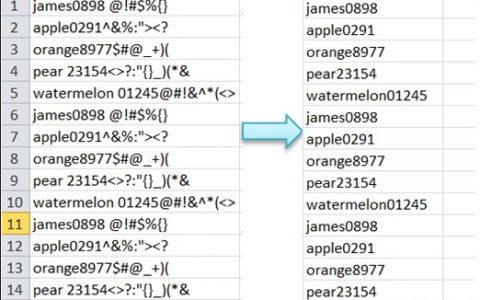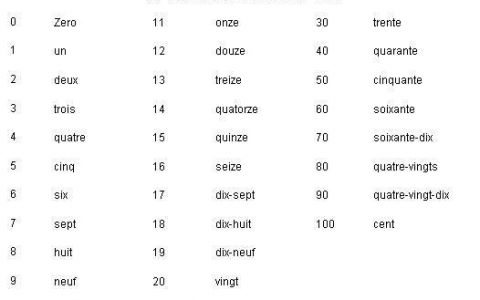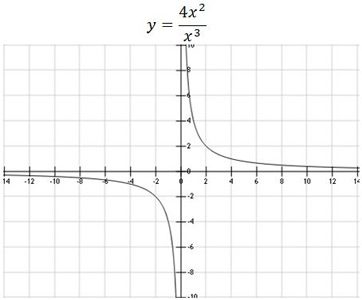We covered the relationship between mass and the number of atoms of a component in the previous section. However, we were able to calculate the amount of the substance from its mass using the chemical formula. But what if a substance’s chemical formula is unknown? In this section, we’ll see how to use the same methods to figure out the chemical formulas of unknown substances. We will also do that based on mass data.
However, in chemistry we represent every substance by a formula. However, it is the simplest formula for this representation. It also has the smallest whole number ratio of all the atoms in the complex. This formula also provides the relative number of atoms of each element in the compound. However, with examples, this article will illustrate the concept of it. Let us study it.
The empirical formula of a compound is the formula that shows the ratio of components contained in the compound. However, it doesn’t represent the actual number of atoms found in the molecule. Subscripts adjacent to the element symbols indicate the ratios.
However, the subscripts are the fewest whole digits that reflect the ratio of elements. This is one of the reasons why we call empirical formulas to be the simplest formula.
Empirical Formula Examples
C6H12O6 is the chemical formula for glucose. Meanwhile, for every mole of C and O, there are two moles of H. Then, CH2O is the EF for glucose.
Similarly, Ribose has the chemical formula C5H10O5, which can be simplified to the EF CH2O.
How to Determine Empirical Formula
Start with the grams of each element, which you can generally find in an experiment.
Assume that the entire mass of a sample is 100 grams so that you can work with basic percentages. Meanwhile, to put it another way, make each element’s mass equal to the percent. However, the entire percentage should be 100%.
To convert the mass of each element into moles, you have to do the following.
Then, multiply the atomic weights of the elements in the periodic table by their molar mass.
Then, divide each mole amount by the little number of moles that your calculation produced.
You should round each number to the next whole number. However, we represent the mole ratio of elements in the compound by the whole numbers. Hence, these numbers are the subscript numbers. It also sticks to the element symbol in the chemical formula.
Empirical Formula Statistics
Determining the whole number ratio can be difficult at times, and you’ll have to rely on trial and error to achieve the right answer. Meanwhile, to get the smallest whole number multiple, multiply each value by the same factor for values close to x.5. If you get a solution of 1.5, multiply each number in the problem by 2 to get a solution of 3. If you receive a value of 1.25, divide each number by four to get a value of 5.
Finding Molecular Formulas Using Empirical Formulas
If you know the molar mass of the chemical, you may apply the EF to obtain the molecular formula. Calculate the EF mass and then divide the compound molar mass by the EF mass to get the EF mass. We can obtain the ratio between the molecular and empirical formula in this way. Meanwhile, to get the subscripts for the molecular formula, multiply all of the subscripts in the EF by this ratio.
Empirical Formula Example Calculation
We examined and found a chemical that contained 13.5 grams of Ca, 10.8 grams of O2, and 0.675 grams of H. Find the compound’s EF.
To begin, look up the atomic numbers in the periodic table to convert the mass of each element into moles. Ca has an atomic mass of 40.1 g/mol, O has an atomic mass of 16.0 g/mol, and H has an atomic mass of 1.01 g/mol.
13.5 g Ca x (1 mol Ca / 40.1 g Ca) = 0.337 mol Ca
10.8 g O x (1 mol O / 16.0 g O) = 0.675 mol O
0.675 g H x (1 mol H / 1.01 g H) = 0.668 mol H
After that, divide each mole amount by the minimum number of moles (0.337 in the case of calcium) and round to the nearest whole number:
0.337 mol Ca / 0.337 = 1.00 mol Ca
0.675 mol O / 0.337 = 2.00 mol O
0.668 mol H / 0.337 = 1.98 mol H which rounds up to 2.00
Now you have the subscripts for the atoms in the EF:
CaO2H2
Finally, follow the guidelines for writing formulas to properly present the formula. However, the compound’s cation comes first, followed by the anion. Ca(OH)2 is the correct spelling of the empirical formula.
What is the Molecular formula?
The molecular formula is a formula that we generate from molecules that represents the total number of individual atoms in a compound’s molecule.
A subscript in a molecular formula indicates the number of each type of atom in a molecule of the substance.
There is a connection between molecular formula and gram molecular mass. Gram molecular mass is a simple whole number multiples of the EF mass.
What is Empirical formula?
The empirical formula is the simplest formula for a compound. We define it as the ratio of subscripts of the smallest whole number of elements in the formula. We also call it the most basic formula. Read Also: What is the centripetal acceleration formula ?
EF is the formula of a material expressed with the smallest number subscript.
The EF specifies the number of atoms in the compound in a given ratio. However, the EF of a compound is directly proportional to its % composition.
Empirical Formula Vs Molecular Formula
| Empirical Formula | Then, Molecular Formula |
| Firstly, an empirical formula represents the simplest whole-number ratio of various atoms present in a compound. | However, the molecular formula shows the exact number of different types of atoms present in a molecule of a compound. |
| Example: For Acetylene the EF is CH Then, for Acetylene the EF is C2H2 | Example (Glucose Molecular Formula Vs Glucose EF) |
Empirical Formula and Molecular Formula
EF and MF of Butane & Octane:
C6H12O6 = 6 × CH2O
However, we can derive a general expression as,
Molecular formula = n × EF where n is a whole number.
However, sometimes, the empirical formula and molecular formula both can be the same.
Solved Examples
Question-1:
The EF of Boron Hydride is BH3. Calculate molecular formula when the measured mass of the compound is 27.66.
Solution
Meanwhile, we know, the atom mass = B + 3(H) = 10.81 + 3(1) = 13.81u
But, as per information, the measured molecular mass for Boron atom is 27.66u
However, by using the expression, Molecular formula = n × empirical formula
Then, n = molecular formula/empirical formula =
= 2
Meanwhile, Putting value of n = 2 in the empirical formula we get molecular formula as
Then, Molecular formula = 2(BH3) = B2H6.
Question-2:
The empirical formula of a compound is COCl2 and its molecular mass is 90.00u. Similarly, find out the molecular formula of that compound.
Solution
COCl2 = C + O + 2(Cl) = 12 + 16 + 2(35.5) = 99 u
However, the empirical formula is the same as molecular mass as n=1, this means the molecular formula is COCl2.
Question-3:
What is the molecular formula of a compound which has an empirical formula of CH2 and also a relative molecular mass of 70?
Solution
Relative molecular mass = 70
Then, empirical formula mass = 12 + 2 = 14
Then, the relative molecular mass is 5 x the relative empirical formula mass
Similarly, the molecular formula is 5 x the empirical formula
Then, the molecular formula is C5H10
Empirical Formula Table
| Element | Percentage | Atomic mass | Moles of atom | Atomic ratio | Simplest ratio |
| Na | Also, 14.31 | 23 | 0.622 | 2 | 2 |
| Then, S | 9.97 | Similarly, 32 | Then, 0.311 | Also, 1 | 1 |
| Then, H | Similarly, 6.22 | Also, 1 | 6.22 | 20 | Then, 20 |
| O | 69.5 | Also,16 | Then, 4.34 | Also, 13.95 | Then, 14 |
Empirical Formula Percent Composition
We define a compound’s chemical identity by its elemental composition. However, chemical formulas are the most concise manner of expressing this elemental makeup. When we don’t know the formula of a compound, the mass of each of its basic parts is the first step in the experimental process of finding the formula. We can calculate the percent composition of a compound using the results of these experiments. We define it as the percentage by mass of each element in the compound. Consider the case of a gas element made entirely of C and H. We can represent this compound’s % composition as follows:
%H = ( Mass H / Mass Compound) × 100%
%C = ( Mass C / Mass Compound) × 100%
If analysis of a 10.0-g sample of this gas showed it to contain 2.5 g H and 7.5 g C, we will calculate the percent composition to be 25% H and 75% C:
%H = ( 2.5 g H / 10 g Compound) × 100% = 25%
%C = ( 7.5g C / 10 g Compound) × 100% = 75%
Empirical Formula Calculator
A 12.04-g sample of a liquid molecule containing C, H, and N included 7.34 g C, 1.85 g H, and 2.85 g N, according to analysis. What is the compound’s % composition?
Solution
To compute percent composition, divide each element’s empirically determined mass by the compound’s overall mass, then convert to a percentage:
%C = ( 7.34 g H / 12.04 g Compound) × 100% = 61.0%
%H = ( 1.85 g C / 12.04 g Compound) × 100% = 15.4%
%N = ( 2.85 g H / 12.04 g Compound) × 100% = 23.7%
The analysis results indicate that the compound is 61.0% C, 15.4% H, and 23.7% N by mass.
Exercise:
A 24.81-g sample of a gas compound containing only C, O2, and Cl. It contains 3.01 g C, 4.00 g O, and 17.81 g Cl. What is this compound’s percent composition?
Answer:
12.1% C, 16.1% O, 71.8% Cl
Empirical Formula from Percent Composition
Finally, examine situations where the percent composition of a compound is available rather than the absolute masses of the complex’s basic parts when constructing empirical formulas. Meanwhile, in such conditions, we may use the % composition to compute the masses of elements present in any helpful mass of compound. Then, we can use these masses to obtain the empirical formula as normal.
Determining an Empirical Formula from Percent Composition
When we fermented grains with the help of bacteria to make ethanol, the reaction formed a gas component.
The gas has a percent composition of 27.29 percent C and 72.71 percent O. What is this gas’s empirical formula?
Solution
Because the percentage scale is 100, it’s easiest to determine the mass of components present in a 100-gram sample. However, the calculation is “most convenient” because the mass of a specific element in a gram is numerically identical to the element’s mass percentage, according to the definition for percent composition. The definition of the “%” unit, results in this numerical equivalent. With this definition in mind, we can express the mass percentages easily as fractions:
27.29 % C = 27.29 g C/ 100 g compound
72.71 % O= 72.71 g O/ 100 g compound
Divide the mass of each element by its molar mass to find the molar amounts of C and H in a 100-g sample:
27.29% C ( mol C / 12.01 g ) = 2.272 mol C
72.71% O ( mol O / 16.00 g ) = 4.544 mol O
Divide each molar amount by the lesser of the two to get the coefficients for the initial empirical formula:
2.272 g C / 2.272 = 1
4.544 g O / 2.272 = 2
Since the resulting ratio is one C to two O atoms, the empirical formula is CO2.
Empirical formula of acetic acid
The empirical formula is the simplest possible formula for a compound.
We can write the molecular formula of CH 3 COOH as C2H4O2. However, the ratios of C: H:O are 2:4:2.
The highest common factor of 2 and 4 is 2.
Then divide each of these numbers by 2 to get the ratio C:H:O=1:2:1
The empirical formula of acetic acid is then CH2O .
Empirical formula of benzene
C6H6 is the molecular formula for benzene. However, the molecular formula is a depiction of the compound’s actual whole number ratio between its basic parts. Empirical formula represents the simplest whole number ratio between the elements that make up a chemical compound. Meanwhile, in C6H6, the C-to-H atom ratio is now 1:1. As a result, C6H6’s empirical formula is simply CH.
Empirical formula of glucose
The empirical formula is the simplest formula for a compound, defined as the ratio of subscripts of the smallest whole number of elements in the formula. It’s also referred to as the most basic formula.
The formula of a substance expressed with the smallest digit subscript is called an empirical formula.
The empirical formula specifies the number of atoms in the compound in a given ratio. However, the empirical formula of a compound is directly equal to its % composition.
Glucose
C6H12O6 is the chemical formula for glucose. A multiple of an empirical formula is represented by the subscripts.
Divide the subscripts by the greatest common factor of 6, which is CH2O, to get the empirical formula.
Glycemic acid has the chemical formula C6H12O6 and the empirical formula CH2O. Between the molecular formula and the empirical formula of glucose, we can deduce a relationship.
C6H12O6 = 6 × CH2O
We can derive a general expression as,
Molecular formula = n × empirical formula
Where n is a whole number
Determining Percent Composition from Formula Mass
The relative abundance of a given element in distinct compounds with known formulae can also be determined using percent composition. Consider the N-containing fertilisers NH3, NH4NO3, and urea as examples. Because N is the active ingredient in agricultural fertilisers, the mass percentage of N in the compound is a practical and financial consideration for users. The % composition of a compound can be easily calculated using its formula mass and the atomic masses of its basic elements in these types of applications. A molecule of NH3 contains one N atom weighing 14.01 amu and three H atoms weighing a total of (3 × 1.008 amu) = 3.024 amu. The formula mass of ammonia is therefore (14.01 amu + 3.024 amu) = 17.03 amu, and its percent composition is:
%N = ( 14.01 g C / 17.03 g Compound) × 100% = 82.27%
%H = ( 3.024 g H / 17.03 g Compound) × 100% = 17.76%
This method can be applied to a pair of molecules, a dozen molecules, a mole of molecules, and so on. The latter amount is the most practical, as it just requires the use of molar masses rather than atomic and formula masses, as shown in Example 2. We may simply calculate percent composition from the formula mass or molar mass if we know the chemical formula of the substance in question.
Empirical Formula Determination
The most frequent method for finding a compound’s chemical formula is to measure the masses of its basic elements, as previously discussed. Chemical formulas, on the other hand, represent relative numbers of atoms in a substance, not their masses. As a result, any experimentally obtained mass data must be utilized to calculate the number of atoms in the molecule. Meanwhile, to do so, we can use molar masses to convert each element’s mass to a number of moles. Then we compare the moles of each element to one another, and convert these values into a whole-number ratio. One can use these numbers to calculate the empirical formula of the substance.
Determination of Empirical Formula with an example
Consider a sample of compound determined to contain 1.71 g C and 0.287 g H. The corresponding numbers of atoms (in moles) are:
1.17 g C × ( 1 mol C / 12.01 g C )= 0.142 mol C
0.287 g H × ( 1 mol H / 1.008 g H ) = 0.284 mol H
As a result, the formula C0.142H0.248 is a proper representation of this chemical. Formulas must, of course, have whole-number subscripts, which can be obtained by dividing each subscript by the smaller subscript:
C 0.142/ 0.142 H 0.248/ 0.142 or CH2
(Recall that subscripts of “1” are not written but rather assumed if no other number is present.)
CH2 is the empirical formula for this molecule. This could be the molecular formula of the molecule as well; however, we’d need further information to make that decision (as discussed later in this section).
Take, for example, a compound sample that was found to contain 5.31 g Cl and 8.40 g O. Following the same approach yields a tentative empirical formula of:
Cl 0.150 O 0.525 = Cl 0.150/ 0.150 O 0.525 / 0.150 = ClO 3.5
In this situation, division by the smallest subscript results in an empirical formula with a decimal subscript. Meanwhile, to convert this to a whole number, multiply each of the subscripts by two, keeping the same atom ratio, and the final empirical formula is Cl2O7.
To summarise, empirical formulas are derived from empirically determined element masses using the following steps:
- The number of moles of any element is calculated by multiplying its mass by its number of moles.
- Subscripts for a tentative empirical formula are obtained by dividing each element’s molar amount by the smallest molar amount.
- If necessary, multiplying all coefficients by an integer to produce the smallest whole-number ratio of subscripts.
Frequently Asked Questions
Why is it called an empirical formula?
If there isn’t a subscription, that signifies the compound only has one atom. The analytical formula is often known as the most straightforward formulation. The ratio of the compound elements present is the mathematical formulation. The numbers of atoms are represented by the subscripts in the formula, resulting in a ratio of whole numbers between them.
Why do we use empirical formulas?
The most basic notational form is empirical formulas. They have the smallest whole-number ratio between the compound basics. Meanwhile, in contrast to molecular formulas, they will not provide information on the total number of atoms in a single compound molecule.
What is the formula for empirical formula?
The mass of each element is converted to moles using the molar mass from the periodic table. Divide each mole value by the smallest number of moles calculated. Round to the nearest whole number. This is the elemental mole ratio, which is represented by subscriptions in the empirical formula.
What is molecular formula and empirical formula?
Chemical equations are divided into three categories: analytical, molecular, and structural. Molecular formulas show the number of each atom type in a molecule, and structural formulas show how the atoms in a molecule are bonded together. Empirical formulas show the simplest total-number ratio of atoms in a compound, molecular formulas show the number of each atom type in a molecule, and structural formulas show how the atoms in a molecule are bonded together.
Why is empirical rule useful?
In most circumstances, the empirical rule is used to help determine outcomes when all of the data is not accessible. It lets statisticians – or those who are studying the data – to see where the data will fall once everything is available. The empirical rule can also be used to determine whether a set of data is normal.



